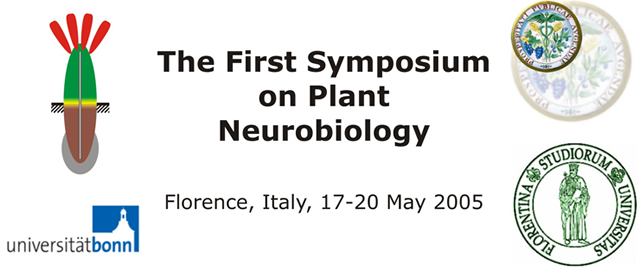|
Forisomes as sensors and aphids as reporters of Ca2+-influx/efflux during
depolarization waves along sieve tubes |
| |
|
Aart J.E. van Bel*, Jens B. Hafke and Torsten
Will |
|
Plant Cell Biology Research Group, Institute of General Botany, Justus-Liebig-Universität,
Senckenbergstrasse 17, D-35390 Giessen , Germany |
| *email:
Aart.v.Bel@bot1.bio.uni-giessen.de
|
| |
Experiments on
electrical propagation are often lacking of a precise definition of the cell types and the ion species
involved. We developed an in vivo system that unequivocally shows calcium involvement in electrical
long-distance signalling via the sieve tubes in intact plants. Shallow windows paradermally cut in the cortex
of major leaf veins of Vicia faba allowed observation of events in sieve tubes and the insertion of
microcapillaries into sieve elements. Exclusively in sieve elements of Fabaceae, protein bodies (forisomes)
occur which reversibly disperse and contract in dependence of calcium. Forisome dispersion enabled to
determine the in vivo Ca2+ concentration in the sieve tubes. Burning of the leaf tip
triggered a depolarization wave along the sieve tubes which concurred with an increase of intracellular
calcium in the sieve elements as shown by Oregon Green. Upon arrival of the depolarization wave, forisomes
often readily dispersed. The forisomes re-contracted several minutes after passage of the wave. The behaviour
of forisomes and the depolarization profiles indicate the involvement of calcium channels and calcium pumps in
electrical propagation along the sieve elements.
As forisomes temporarily plug sieve plates, the reaction
of aphids to burning-induced plugging of the sieve plates - and thus food deprivation - was investigated.
Behaviour of aphids and the position of the stylet insertion can be monitored by the so-called EPG-technique.
Microelectrodes attached onto the aphid's abdomen record electrical patterns produced by the aphid during
foraging. Each specific wave pattern is related to foraging of a defined cell type. After puncturing of a
sieve tube, aphids produce watery saliva which is reflected by a E1-wave pattern. As soon as the aphids are
settled, an E2-wave pattern establishes which can hold for many hours.
The hypothesis that the aphids
would react to sudden food deprivation or turgor drop was tested in the plant/aphid combinations Vicia
faba/Megoura viciae and Hordeum vulgare/Schizaphis graminae by burning the leaf tips. It
appeared that plugging of sieve plates causes an immediate transition from the E2- back to the E1-wave
pattern. Aphids were then used to mimick a row of microelectrodes along the phloem. The behaviour of aphids at
various distances from the site of burning enabled us to record speed and magnitude of the depolarization
wave. The degree of the aphid's reaction was supposed to be related to the degree of sieve plate plugging
which in turn is related to the degree of local depolarization and Ca2+ influx. The EPG-data seem
to indicate that the propagation speed slows down with the distance and that the depolarization wave becomes
extinct after 10 to 20 cm. |

